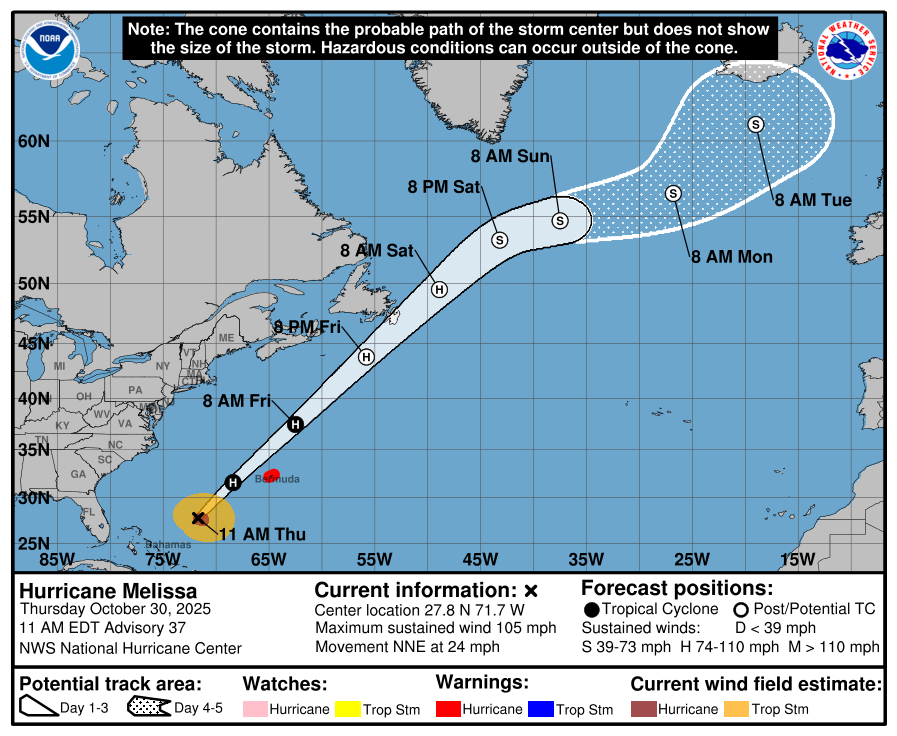Hurricane Melissa

Hurricane Melissa is headed for Bermuda following its historic Category 5 landfall in Jamaica and southeast Cuba lashing, before it becomes a North Atlantic non-tropical low this weekend.
The devastating hurricane made landfall early Tuesday afternoon near New Hope, Jamaica, as a Category 5 with winds of 185 mph and a pressure of 892 millibars, a historic strike that will lead to months and years of recovery. This landfall will go down in the record books as one of the strongest anywhere in the Atlantic Basin.
Happening Now
Melissa is now accelerating into the open Atlantic toward Bermuda after plowing through the southeast Bahamas Wednesday.
There are still a few leftover bands of rain lingering across portions of Haiti and the Dominican Republic, but those should come to an end later today.